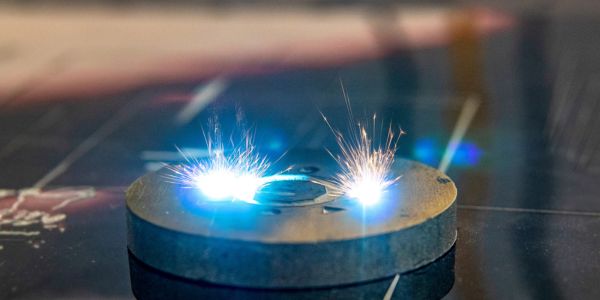Table of Contents
Introduction
In the realm of electronic music, one name stands out as a true pioneer: Oskar Sala. Born on July 18, 1910, in Greiz, Germany, Sala’s groundbreaking contributions to the field have left an indelible mark on the history of music.
Early Life and Musical Background
Oskar Sala’s passion for music was evident from a young age. He began his musical journey by learning to play the piano and the cello. Sala’s exceptional talent soon caught the attention of the renowned musicologist and composer Paul Hindemith. Under Hindemith’s guidance, Sala honed his skills and developed a deep understanding of music theory.
The Trautonium: A Revolutionary Invention
Sala’s most significant contribution to electronic music was his invention of the Trautonium, an early electronic musical instrument. In collaboration with Friedrich Trautwein, a fellow German musician, Sala designed and built the Trautonium in the early 1930s. This groundbreaking instrument allowed musicians to produce a wide range of sounds by varying finger pressure on a metal string.
It was one of the earliest examples of a touch-sensitive electronic instrument and paved the way for future advancements in electronic music.
Collaboration with Filmmakers
Sala’s innovative instrument caught the attention of filmmakers, leading to numerous collaborations and groundbreaking achievements in the world of cinema. One of his most notable collaborations was with director Alfred Hitchcock on the movie “The Birds” (1963).
Sala’s eerie electronic soundscape added an element of suspense and terror, creating an unforgettable auditory experience for the audience. His work on “The Birds” earned critical acclaim and solidified his reputation as a pioneer of electronic music in the film industry.

Further Contributions and Legacy
Oskar Sala’s contributions to music extend beyond his invention of the Trautonium and his work in cinema. He explored the possibilities of electronic music in various genres and composed numerous pieces that showcased the instrument’s versatility. Sala’s compositions ranged from experimental and avant-garde to more traditional and melodic, demonstrating his remarkable adaptability and creative genius.
In addition to his own compositions, Sala collaborated with renowned composers such as Karlheinz Stockhausen and Pierre Schaeffer, further expanding the reach and influence of electronic music. His work inspired a new generation of musicians and composers to explore the limitless possibilities of electronic sound.
Sala’s legacy is still felt in the modern music industry. His pioneering efforts laid the foundation for the development of synthesizers, which have become a staple in contemporary music production. His influence can be heard in the works of artists across various genres, from classical to pop, electronic to experimental.
Summary
Oskar Sala’s groundbreaking work in electronic music and his invention of the Trautonium has cemented his place in music history. As a visionary and a true pioneer, Sala’s contributions continue to inspire and shape the world of music. From his collaborations with filmmakers to his compositions and collaborations with fellow musicians, Sala’s legacy lives on, reminding us of the power of innovation and the enduring impact of one person’s passion and creativity.
FAQ
When was Oskar Sala born?
Oskar Sala was born on July 18, 1910, in Greiz, Germany.
When did Oskar Sala pass away?
Oskar Sala passed away on February 26, 2002, in Berlin, Germany, at the age of 91.
What is the Trautonium?
The Trautonium is an electronic musical instrument invented by Oskar Sala in the 1920s. It was one of the first electronic instruments capable of producing continuous pitch variation and was used extensively in film soundtracks and avant-garde music compositions.
What are some notable works by Oskar Sala?
One of Oskar Sala’s most famous works is the soundtrack he created for Alfred Hitchcock’s film “The Birds” in 1963. He also collaborated with other prominent artists, such as Karlheinz Stockhausen and Paul Hindemith.
Did Oskar Sala contribute to film music?
Yes, Oskar Sala made significant contributions to film music. His most notable work in this field is the creation of the eerie bird sounds for Hitchcock’s film “The Birds.” He used his Trautonium to produce these distinctive sounds, which added a haunting quality to the movie.
Was Oskar Sala involved in any other inventions?
Aside from the Trautonium, Oskar Sala also invented other instruments and devices related to electronic music, including the Mixtur-Trautonium, a smaller and more versatile version of the original Trautonium. He continued to experiment with and improve upon his inventions throughout his career.
Did Oskar Sala receive any awards or recognition?
Yes, Oskar Sala received several awards and honors for his contributions to music and technology. In 1974, he was awarded the Filmband in Gold by the German government for his outstanding work in film music. He also received the Berlin Art Prize in 1996.
Did Oskar Sala teach or pass on his knowledge to others?
Yes, Oskar Sala was an influential teacher and mentor in the field of electronic music. He taught at the Berlin University of the Arts, where he passed on his knowledge and expertise to the next generation of musicians and composers.
How has Oskar Sala’s work influenced electronic music?
Oskar Sala’s work had a significant impact on the development of electronic music. His inventions, particularly the Trautonium, opened up new possibilities for sound creation and manipulation. His pioneering use of electronic instruments in film soundtracks also helped establish the role of electronic music in the cinematic medium. His innovative approach and experimentation continue to inspire electronic musicians to this day.
Also, read Honeywell xnx transmitter
References
- Tutschku, H. (2015). Oskar Sala: The Inventor of the Mixtur-Trautonium and Pioneer of Electronic Music. Organised Sound, 20(1), 102-104.
- Engh, B. (2016). The Sound of Suspense: Oskar Sala and the Creation of the Bird’s Electronic Score. Journal of Film Music, 9(1), 39-56.
- Holmes, T. B. (2012). Electronic and Experimental Music: Technology, Music, and Culture. Routledge.
- Chadabe, J. (2013). Electric Sound: The Past and Promise of Electronic Music. Prentice Hall.
- Théberge, P. (1997). Any Sound You Can Imagine: Making Music/Consuming Technology. Wesleyan University Press.































